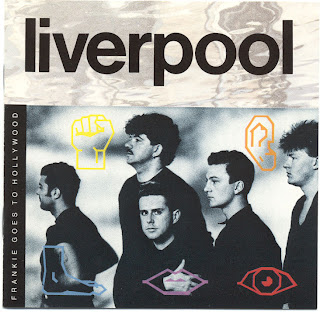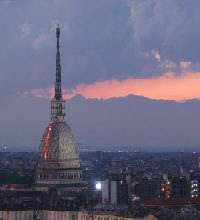+-+Front+cover.jpg)
Musicalmente parlando sono cresciuto a “pane e Beatles”, essendo nato nel 1960, proprio il “decennio dei Fab Four”. E oltre ai loro storici album come gruppo, da ragazzo ascoltavo spesso i dischi che John, Paul, George e Ringo pubblicarono da solisti dopo lo scioglimento.
Il meno “celebre” dei quattro, ovvero il batterista-cantante Ringo Starr, pubblicò nel 1974 il suo quarto album solista “Goodnight Vienna”, che a suo tempo non mi diceva granché. Tuttavia ho avuto modo di riascoltarlo ultimamente, rilvalutandolo in un certo senso. Certamente non è all’altezza dei lavori di John e Paul, tanto per fare un esempio; comunque offre alcuni spunti interessanti di rock e blues, con abbondanza di ottoni e un feeling in taluni casi da rock d’oltreoceano.
Peccato che dopo un inizio promettente (i primi cinque titoli, intendo dire), gli altri brani tendano a ripetere clichè scontati. E non mancano nemmeno le sviolinate di archi. (Tanto per intenderci – e per rimanere in tema con il titolo di questo album - il brano finale del “White album” dei Beatles, intitolato appunto “Goodnight”, era ben altra cosa!)
I miei brani preferiti sono comunque “Goodnight Vienna”, “Occapella”, “Husbands and wives”, “Snookeroo” e l’originale remake di “Only you”, il successo mondiale dei Platters.
Ma la vera cosa che non mi piace affatto è la copertina. Ha un non so che di …
Il meno “celebre” dei quattro, ovvero il batterista-cantante Ringo Starr, pubblicò nel 1974 il suo quarto album solista “Goodnight Vienna”, che a suo tempo non mi diceva granché. Tuttavia ho avuto modo di riascoltarlo ultimamente, rilvalutandolo in un certo senso. Certamente non è all’altezza dei lavori di John e Paul, tanto per fare un esempio; comunque offre alcuni spunti interessanti di rock e blues, con abbondanza di ottoni e un feeling in taluni casi da rock d’oltreoceano.
Peccato che dopo un inizio promettente (i primi cinque titoli, intendo dire), gli altri brani tendano a ripetere clichè scontati. E non mancano nemmeno le sviolinate di archi. (Tanto per intenderci – e per rimanere in tema con il titolo di questo album - il brano finale del “White album” dei Beatles, intitolato appunto “Goodnight”, era ben altra cosa!)
I miei brani preferiti sono comunque “Goodnight Vienna”, “Occapella”, “Husbands and wives”, “Snookeroo” e l’originale remake di “Only you”, il successo mondiale dei Platters.
Ma la vera cosa che non mi piace affatto è la copertina. Ha un non so che di …
Voto personale (scarso / insufficiente / sufficiente / buono / distinto / ottimo / eccellente): Distinto.
I was educated to rock music to the sound of the Beatles - me being born in 1960, the very “decade of the Beatles”. In addition to the milestone records of the Fab Fours, I also used to listen, when I was a boy, to the solo albums released by John, Paul, George and Ringo after they disbanded.
In 1974, the least “famous” of the Beatles, i.e. drummer-vocalist Ringo Starr, released its fourth solo album entitled “Goodnight Vienna”, which I didn’t dig very much at that time. Yet I’ve chanced to listen to it again lately, and I must admit I have rediscovered it – so I did! Of course it cannot compare to the albums made by John and Paul; in any case, “Goodnight Vienna” includes some nice songs - a blend of rock and blues, with plenty of brass instruments and a sound that sometimes feels American”.
It is a pity that after a promising start (the first five tracks, I mean), the following songs tend to sound repetitious and indulge in stock patterns, including schmaltzy string sections. (To put it clear - and to stick to the text of this album’s title - “Goodnight” i.e. the closing track of the Beatles’ famous “White album”, was by far much lovelier!)
My favourite songs include “Goodnight Vienna”, “Occapella”, “Husbands and wives”, “Snookeroo” and, above all, “Only you”, Ringo Starr’s cover version of the Platters’ world-famous hit.
But the only thing I really don't like about this album is the cover sleeve. There’s something dire in it …
In 1974, the least “famous” of the Beatles, i.e. drummer-vocalist Ringo Starr, released its fourth solo album entitled “Goodnight Vienna”, which I didn’t dig very much at that time. Yet I’ve chanced to listen to it again lately, and I must admit I have rediscovered it – so I did! Of course it cannot compare to the albums made by John and Paul; in any case, “Goodnight Vienna” includes some nice songs - a blend of rock and blues, with plenty of brass instruments and a sound that sometimes feels American”.
It is a pity that after a promising start (the first five tracks, I mean), the following songs tend to sound repetitious and indulge in stock patterns, including schmaltzy string sections. (To put it clear - and to stick to the text of this album’s title - “Goodnight” i.e. the closing track of the Beatles’ famous “White album”, was by far much lovelier!)
My favourite songs include “Goodnight Vienna”, “Occapella”, “Husbands and wives”, “Snookeroo” and, above all, “Only you”, Ringo Starr’s cover version of the Platters’ world-famous hit.
But the only thing I really don't like about this album is the cover sleeve. There’s something dire in it …
My personal mark (very poor / poor / pass / good / fairly good / very good / excellent): Fairly good.
TRACK LIST:
1. Goodnight Vienna
2. Occapella
3. Oo-wee
4. Husbands and wives
5. Snookeroo
6. All by myself
7. Call me
8. No no song
9. Only you
10. Easy for me
11. Goodnight Vienna (reprise)
12. Back off boogaloo (bonus track)
13. Blindman (bonus track)
14. Six o’clock (extended version) (bonus track)
2. Occapella
3. Oo-wee
4. Husbands and wives
5. Snookeroo
6. All by myself
7. Call me
8. No no song
9. Only you
10. Easy for me
11. Goodnight Vienna (reprise)
12. Back off boogaloo (bonus track)
13. Blindman (bonus track)
14. Six o’clock (extended version) (bonus track)
GOODNIGHT VIENNA (RINGO STARR) - 61,4 MB
.jpg)
+-+Front+cover.jpg)

+-+Front+cover.jpg)












+-+Front+cover.jpg)






+-+Main+front+cover.jpg)
+-+Front+cover.jpg)












+-+Front+cover.jpg)


.jpg)
+-+Front+cover.jpg)

+-+Front+cover.jpg)
.jpg)
.jpg)
.jpg)
.jpg)
+-+Front+cover.jpg)



















